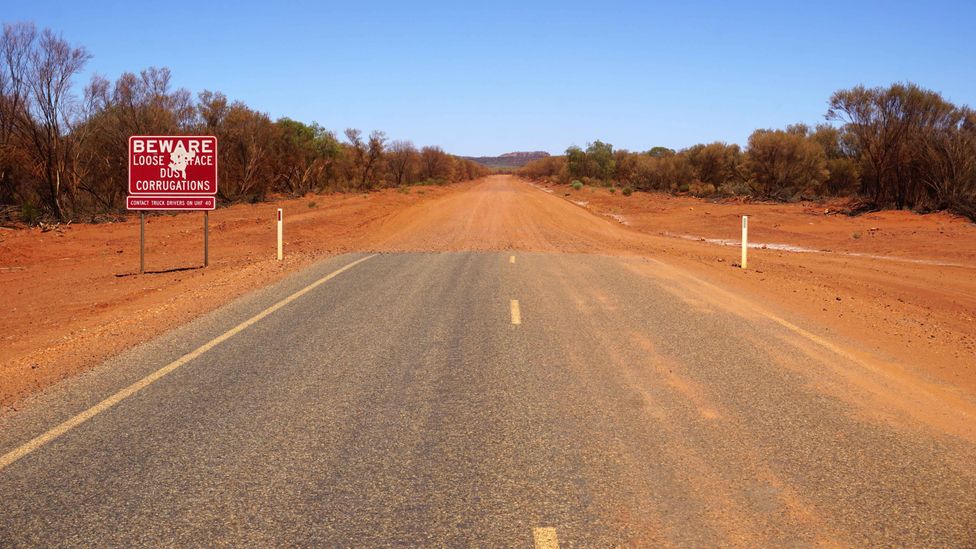
In every direction, fire-red sand fanned out across the land. Everything that wasn’t red seemed covered in it: the boab trees, the spinifex, the termite mounds stretching like tiny Towers of Babel towards the sky. The road itself shimmered like a sea of rubies. We were just hours from Alice Springs, Australia’s de facto inland capital, and already alone on the Tanami Track.
As it happens, that’s part of the appeal.
The Tanami, as locals call it, is one of Australia’s greatest Outback adventure tracks. The 1,077km road bisects the namesake Tanami Desert – one of the most isolated and arid regions in the world – connecting the Red Centre and Kimberley region, the country’s rugged north-west frontier.
Although the route is mostly traversed by ranchers and lorries running to the remote Granites goldmine, plus the odd feral camel, the Tanami also attracts intrepid travellers who come for the raw scenery, the bush camping and the notoriety for driving across one of Australia’s longest and most challenging roads.
Once we passed Tilmouth Well, a lonely roadhouse 180km north of Alice Springs and one of the last fuel stops for hundreds of kilometres, I quickly realised how daunting this drive could be.
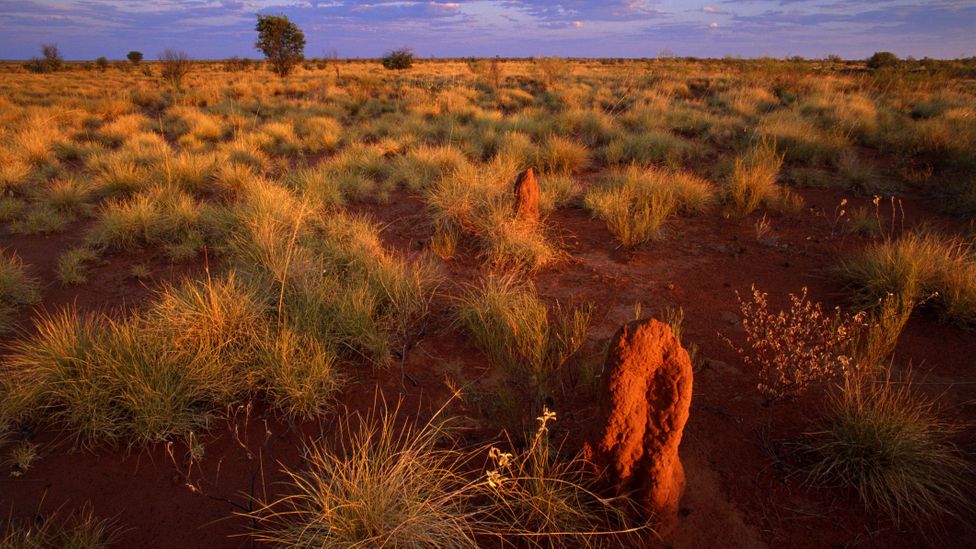
The Tanami Desert is one of the most isolated and arid regions in the world (Credit: Theo Allofs/Getty Images)
Here, the road devolved into a battered corrugated dirt track and settlements became scarce, making a four-wheel drive vehicle, water jugs and jerry cans of fuel almost mandatory. Such conditions used to send shivers down travellers’ spines. While marginally better infrastructure has reduced some risks, the Tanami’s remoteness, unpaved surface and folklore still demand respect.
By the time we’d left the bitumen behind, I understood the primitive desire to conquer this terrain. But once we reached the town of Yuendumu, the Tanami became more than a simple act of completion.
Founded in 1946 by the Australian government’s Native Affairs Branch to provide welfare for Aboriginal communities displaced by gold mines and cattle ranches, Yuendumu is home to about 1,000 people today. Most are Warlpiri, the Aboriginal Australians who are the traditional owners of the area and manage the land as part of a trust.
The Warlpiri have lived in the region for thousands of years. Researchers are still discovering traces of their history, from sacred rain-making sites to ancient carvings in boab bark. But 20th-Century gold rushes and pastoral expansion left the land’s ancient stewards in limbo. It wasn’t until 1978, two years after Australia passed the Aboriginal Land Rights Act, that the Warlpiri regained control of the land.
While several Aboriginal communities dot the Tanami, Yuendumu is one of the few that openly welcomes outsiders. Much of the credit for that, I learned, belongs to the Warlukurlangu Arts Centre.
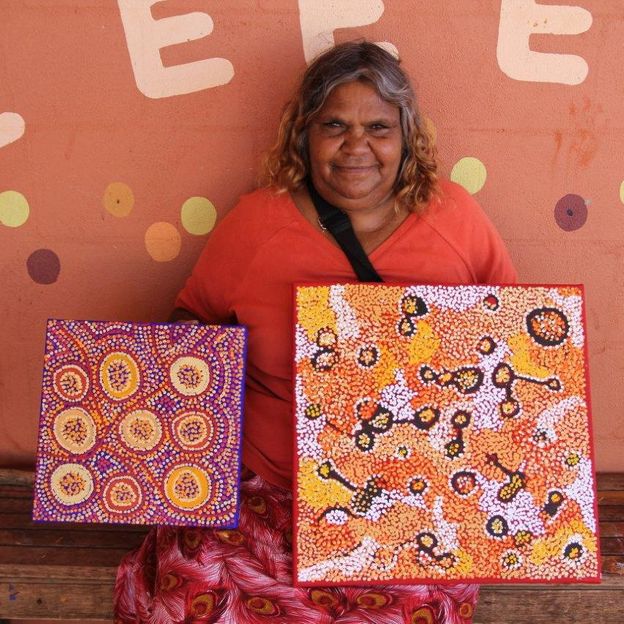
Visitors are welcome at the Warlukurlangu Art Centre to learn more about Warlpiri art (Credit: Warlukurlangu Art Centre)
Founded in 1985, Warlukurlangu is one of the longest-running Aboriginal-owned art cooperatives in Australia. Some 800 artists work here, producing 11,000 pieces in 2022 alone.
Today, manager Cecilia Alfonso oversees day-to-day operations, as she has for more than two decades. Early in her tenure, Alfonso and assistant manager Gloria Morales noticed tourists blitzed past Yuendumu, unaware they could enter without a permit. To change that, they hung “visitors welcome” signs on the road.
“It reflected our ethos,” she explained. “Many people told us, ‘This is the first welcoming sign we’ve come across [on the Tanami]’.”
Since then, Warlukurlangu has become one of the Tanami’s top tourist sites.
Inside, we found a warehouse filled with colourful, Pointillist-like paintings representing Dreaming stories, the Aboriginal legends that explain the origins of the world and pass on knowledge, cultural values and traditions to future generations. After an hour perusing shelves teeming with remarkable paintings, I settled on a red-hued piece bisected with curving dotted lines by artist Christine Nangala Brown. On my way out the door, I noticed nods of approval from a group of women dabbing paint onto canvases.
Painting is a way for Aboriginal people to show the world that they have this culture that is very deep and meaningful
“Art forms a bridge between cultures,” Alfonso explained. “Painting is a way for Aboriginal people to show the world that they have this culture that is very deep and meaningful.”
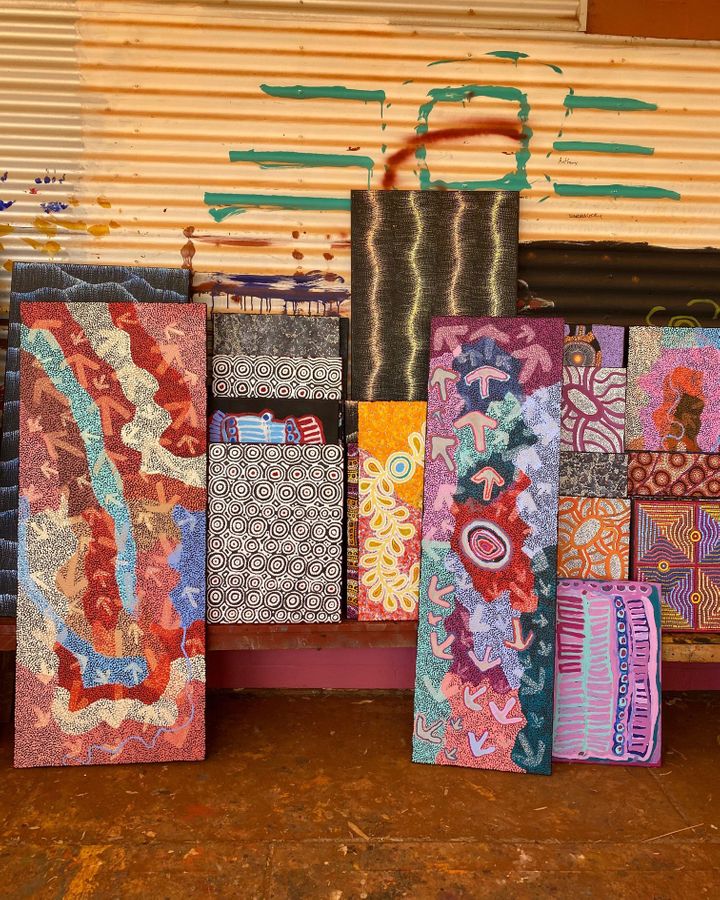
The centre is one of the longest-running Aboriginal-owned art cooperatives in Australia (Credit: Warlukurlangu Art Centre)
Such interactions could become increasingly important. In 2022, Constable Zachary Rolfe was acquitted of murdering Warlpiri teenager Kumanjayi Walker three years earlier in Yuendumu. The incident amplified the friction between the community and contemporary, predominantly white Australia.
But development along the Tanami could provide an off-ramp for the tension, allowing more people interact with Warlpiri art and get to know their culture.
Otto Jungarrayi Sims, a Warlpiri elder and pioneering artist from Yuendumu, told me more tourism would be a boon. Beyond adding new income streams for the community, tourism activities could help share and preserve traditional rites. Sims said the community was already developing desert trips that will teach guests how to hunt, cook and live as the land’s first people have for millennia.
“I think there is a hunger out there to engage with Indigenous culture and experience the landscape,” Alfonso added.
As we drove another 450k north-west from Yuendumu to our camping spot for the night, I understood that hunger.
Travellers can camp almost anywhere along the Tanami, apart from private land. We settled on a clearing beside the Western Australia border. As the day ended, the earth glowed even more intensely. Once the sun dipped past my sightline, a high-definition night sky appeared.
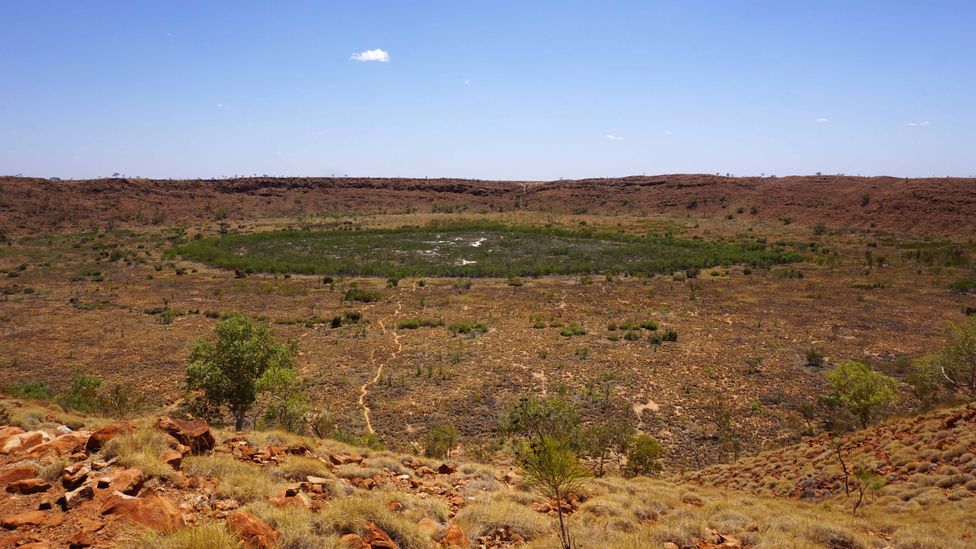
Wolfe Creek Crater was formed by a massive meteorite smashing into Earth around 300,000 years ago (Credit: Craig Sauers)
I had rarely seen stars shine so bright. I imagined the legends they may have inspired in those seated here thousands of years ago. I also felt a deep respect for the seemingly infinite landscape they illuminated – a sensation heightened by the fact that no vehicles drove by all night.
The next morning, we set off on the final stretch. Before midday, we reached Wolfe Creek Crater, a bulge formed by a meteorite 300,000 years ago and focal point of Aboriginal origin stories. According to a legend held by the local Djaru people, it was created when a giant snake poked its head through the ground. (The Djaru call the crater Kandimalal.)
Many Australians today associate it with a more modern mythology: the horror film Wolf Creek. From a bookseller in Alice Springs to a Tilmouth Well attendant, we had been repeatedly, jokingly warned to “watch out for Mick Taylor”, the sadist who preys on tourists in the film.
After navigating a winding dirt access road, we found ourselves alone at the crater. I felt a pucker of Mick Taylor-induced anxiety. The site is so remote that it wasn’t discovered by geologists until 1947 (Aboriginal Australians, however, had long known about it). But the sense of solitude quickly disappeared once we clambered to the rim of the crater and got a clear view of what it contained.
Acacia and eucalyptus trees filled the basin, a peculiar pocket of vegetation contrasting the tawny earth with splashes of white, olive and green. I hadn’t seen such colours in days, and we had it all to ourselves. But I left the crater feeling conflicted.
That’s because the Tanami is going to be modernised.
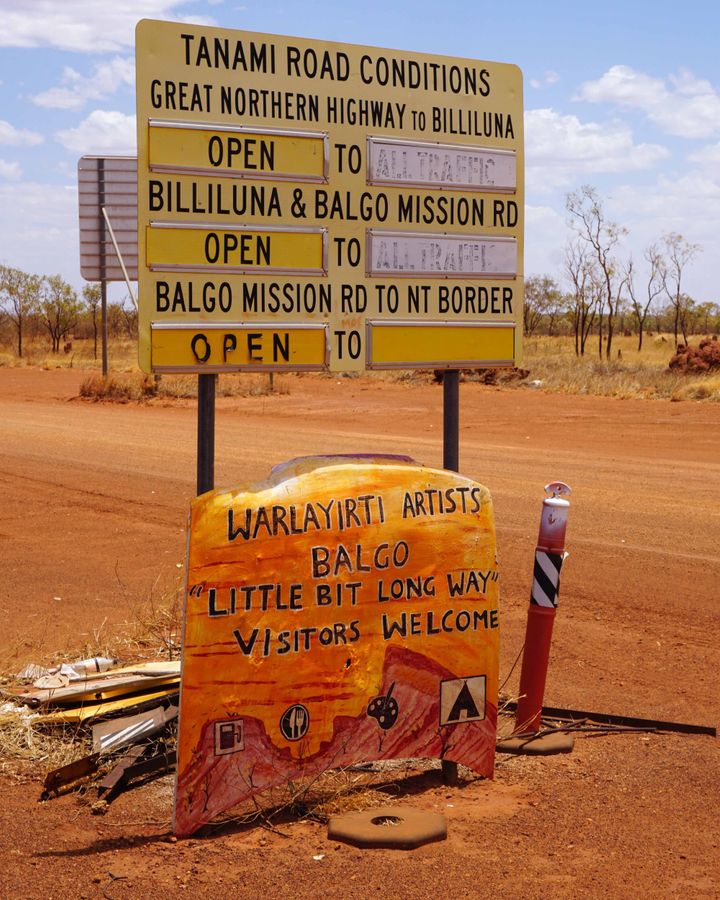
Plans to seal the Tanami Track will bring more tourists to the region and to its remote communities (Credit: Craig Sauers)
The Northern Territory has already begun paving 150km of road past Tilmouth Well. Meanwhile, Western Australia recently earmarked A$500 million to seal its stretch of the Tanami to boost cattle farming and mining. By 2030, the whole road might be sealed.
Improving visitor access not only changes the experience – it also raises questions about sustainability and development in Aboriginal communities.
In its 2030 roadmap, the Northern Territory government identified Aboriginal cultural tourism as a key priority. A traversable Tanami on top of this official push could bring an influx of tourists to isolated communities that aren’t equipped to handle it.
But Sims told me he views the development positively. “This will create opportunities for the tribe,” he explained. “Now is the time to look ahead.”
We must remember to protect our country, our culture, the environment, the biodiversity
The Warlpiri, after all, have always been here. They’ve witnessed change before. But like our 4X4 rumbling down the Tanami, they hope it doesn’t move too quickly.
“We must remember to protect our country, our culture, the environment, the biodiversity,” Sims said. Then he paused, collected his thoughts and added: “As the first people, the stewards of the land, we must always embrace humanity, too. This is the most important thing.”